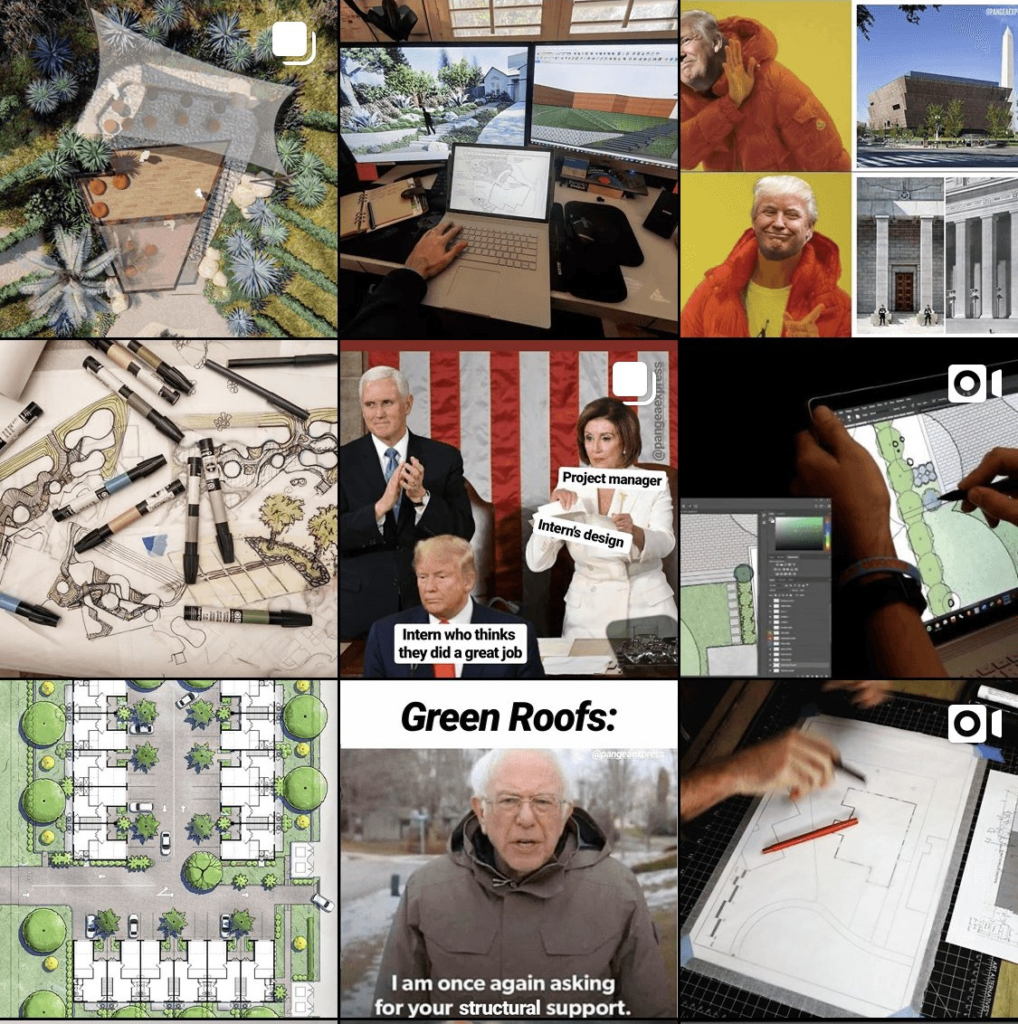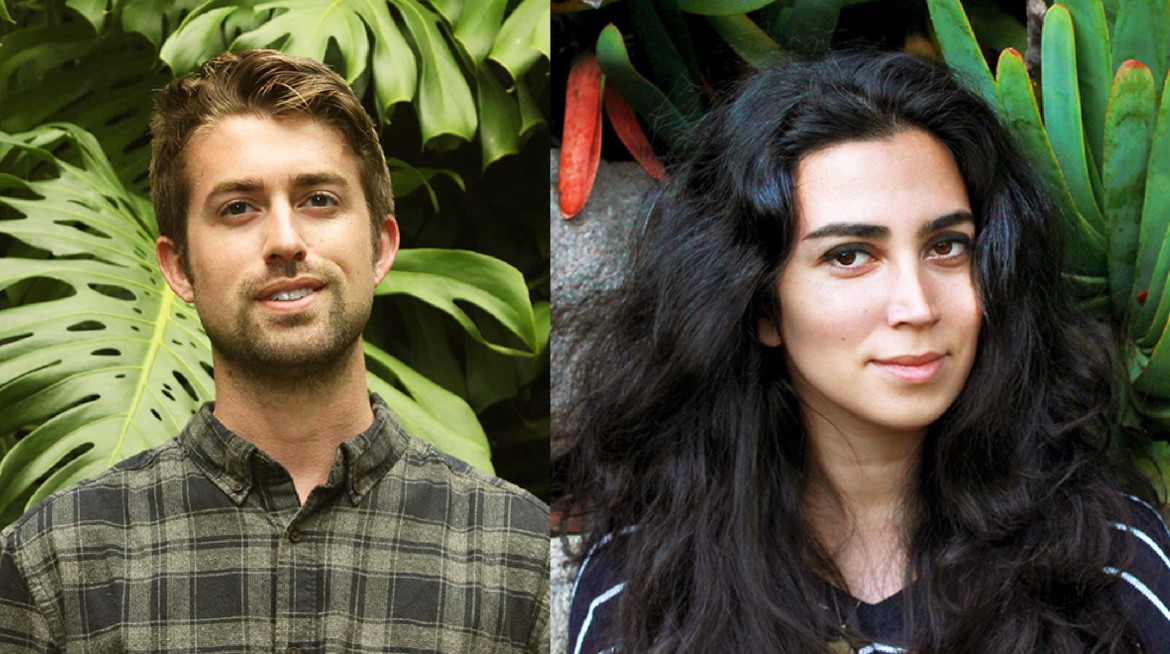By Nina Tabios
Oftentimes we read about the negatives of social media, but for Academy of Art University alumni Eric Arneson and Nahal Sohbati and their careers as landscape architects, it has been nothing but positive.
Arneson and Sohbati were students in the School of Landscape Architecture when they started using Instagram to share their work. As they moved into their professional lives—and picked up a few awards from American Society of Landscape Architects (ASLA) along the way—they started to notice all that time uploading to the ‘gram starting to pay off.
“We had pretty small classes [at the Academy] and so through social media, we were able to extend that community,” Arneson said. “We reached out to other architects and landscape designers throughout the country and throughout the world. We can bounce ideas off each other and get inspiration from people who are doing very different things in Brazil, or China, or Mexico.”
Recently Arneson (B.F.A. 2016) and Sohbati (M.F.A 2017) were named to the Top 10 Social Media Accounts of Individual Landscape Architects as part of the 2nd Annual Land8 Social Media Awards. Hosted by Land8, an online landscape architects network, the award recognizes professionals and industry leaders who use the platform to advocate and raise awareness of landscape architecture as a profession.
Academy Art U News spoke with Arneson and Sohbati on their use of social media—specifically Instagram—and the ways it has benefitted their careers, including taking their partnership to the next level and opening their own Santa Barbara-based firm, Topophyla.
When did you start using social media to showcase your work?
Nahal Sohbati: We started in school. We were spending most of our time working on projects, including ones we did together, like the San Francisco Garden and Flower Show [in 2015]. We really enjoyed how people shared on social media what they were doing on a daily basis and so we started to do the same thing, sharing snapshots of our daily routine on Instagram. We wound up getting into this landscape design community that is in different parts of the world and we just learned a lot from the different voices. I think that was the main inspiration for us, too—to get comments from people that aren’t right next to us and have a different perspective while we get to share our perspective with them as well.

What kind of images were you sharing?
NS: We really got to share the process of how to get into a final design. Most firms just share the final product. For us, it’s more about the process it takes to get to that final masterpiece. It takes a lot of iterations of the same design, and I think people really enjoy seeing that. We figured out drawings and loose sketches are what people get really excited about. And that’s what we like to share more of: a way to get to the final design, what are the challenges and what are the ways we know how to solve these problems.
Eric Arneson: It’s a behind-the-scenes look into the day in a life of a landscape designer. I think people really enjoy seeing that.
I feel like it’s almost an extension of your portfolio as well.
EA: It is pretty much our primary portfolio at this point—a revolving portfolio that changes every day because you’re uploading chronological stuff and it’s in order. Since we’ve been posting on social media for a long time, we’ve gained a huge follower base for what we do. And what that’s done is it’s given us a lot of exposure to other people we can collaborate with and clients that can hire us. So it’s almost free marketing at this point. And it’s organically growing.
NS: When you have your work on social media, there’s a greater possibility that firms or other designers will look at it. They might even be people you never thought about. We have followers from really famous firms that we never thought they’d even look at our boards. But now we have this connection with them on our posts, our direct messages, and so we really built this [network] of professionals. It’s almost like having a subscription to a magazine. To have a post on a daily basis is what makes our followers come back and browse our work more.
How did posting on social media lead to starting Topophyla?
EA: The network we have on Instagram reaches out to tens of thousands of people, and we get jobs through that because people stumble upon our profiles. All of our best projects—our favorite projects that we’ve been a part of—are from Instagram. They see our design work and they like it, they can decide to hire us. And that goes for other landscape architects, firms, clients. There’s a famous architect in Dubai who had been following us for a long time and we like each other’s posts. One day he messaged and said he had a big project and wanted us on their team of landscape designers. So after that, we got emails, [were] told about the project and we’ve been working on it since.
NS: It was the same thing for our residential design project. There was a family that was looking for a landscape designer but they were using Instagram as their main source to look at design firms. And that’s how they found us. They messaged that they loved our designs and that they wanted to work with us for a backyard design.
EA: It’s very organic the way that this works. It’s kind of blind in the sense that we don’t know who is looking at our profiles, so we never know what project is going to come next.
How would you say Topophyla is different than other firms you’ve worked with?

NS: We had this idea to make a firm that experiments with different approaches to design, from making things on our own to spending time to really get inspired from different things. We have this vision to change the way offices work and we’re trying to bring in new things to the field. Eric brings in drone technology, we’re also trying 3-D printing, the Occulus VR. So we’re trying to combine different design skills and jump into different fields to anchor into landscape architecture. We have more room [for] adventure and do more experimentation. There are some projects we tried to get that aren’t necessarily landscape.
EA: We always felt we needed to get experience, work with other people for a long time and we decided to just jump and go for it, to learn trial by fire and learn the hard way on some things. It’s more difficult work but it’s definitely worth it because we now have ownership over what we’re doing—we have control over our design, our projects, our schedule. We have a wide variety of projects from large campuses to small residential projects to rendering design to everywhere in between. We have quite a few projects we’re working on right now, all in different phases of design.
Have you experienced anything kind of negative on social media?
NS: Because I don’t post many photos of myself, most of the time people assume I’m a man. And it’s not a big problem for me, but I do think it’s an opportunity to show more women in the field, to encourage more women to get involved and consider it as a career path for them. There’s actually an Instagram page for an organization called Women in Landscape Architecture. There have been panels discussing how to get more women in this field.
EA: Landscape architecture is still a pretty new field but social media has been a way to show what it is and how diverse it is and what are the different ways you can work in landscape architecture. There are a lot of different branches you can fit yourself into.
What are your pieces of advice on how landscape architecture students can use social media to their benefit?
NS: Follow different landscape schools. The program at Harvard allows students to take over their Instagram for a day to just show the processes they go through at the school on a daily basis. It’s not necessarily design-related, it’s just an interesting thing to see what other programs are up to. I think it makes a good community and ally.
EA: I would suggest that they post as much as they [can], as often as they can. Approach social media as their portfolio and treat it as such. It doesn’t have to be perfect, it’s just that people like to see process and design. I think that’s one of the most exciting and interesting things about art and design, [which] is the process, not the final product. What art students will be experiencing 99% of the time is the dirty, rough frustrating process we all go through constantly. Think of it as an opportunity to showcase yourself [to] people on Instagram and YouTube. There’s millions of people watching and looking every day, so you have this freeway to reach all these people and I would utilize it as much as possible.
Follow their Instagrams, Eric Arneson at @pangeaexpress and Nahal Sohbati at @nahalsbt.
